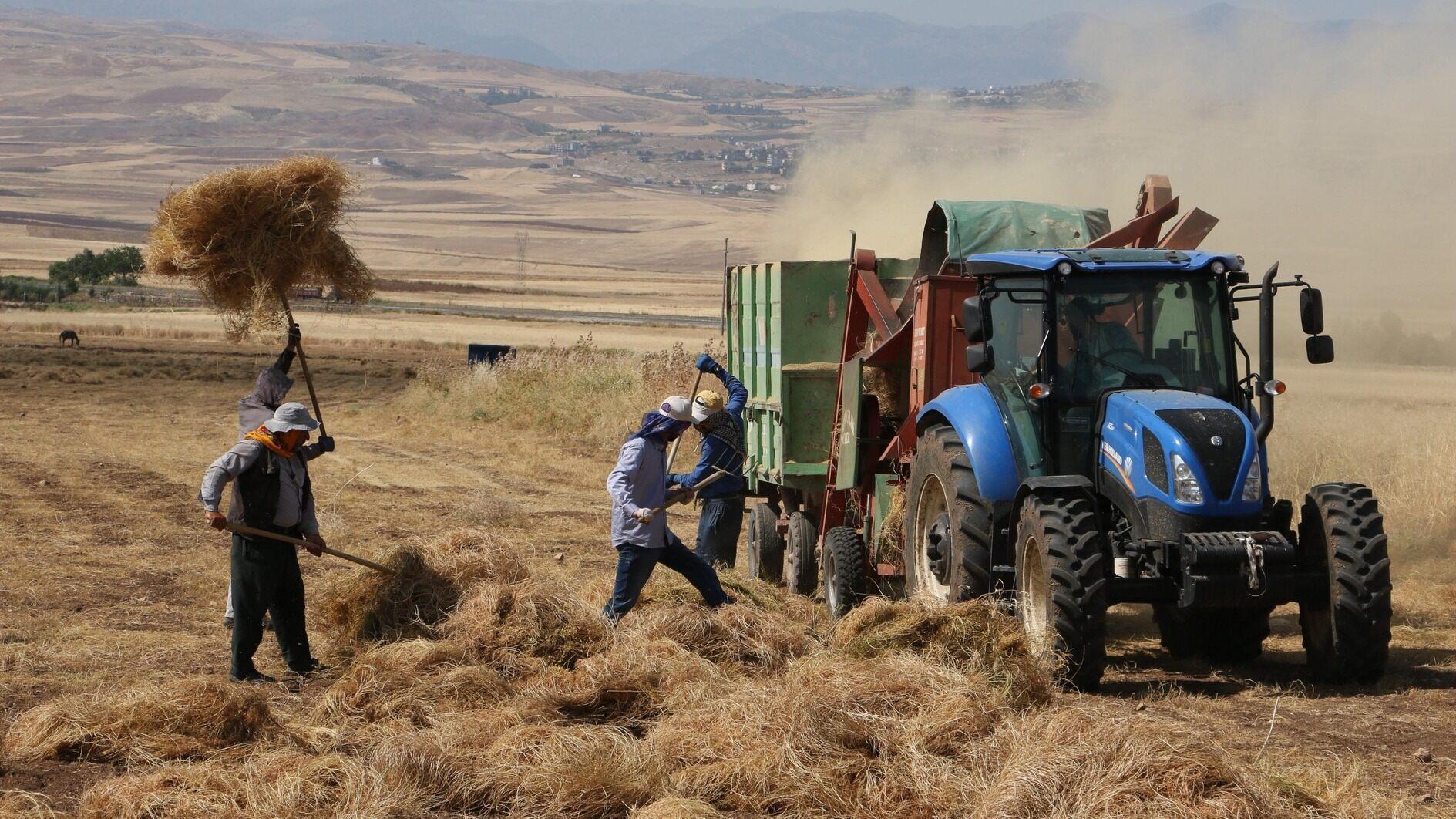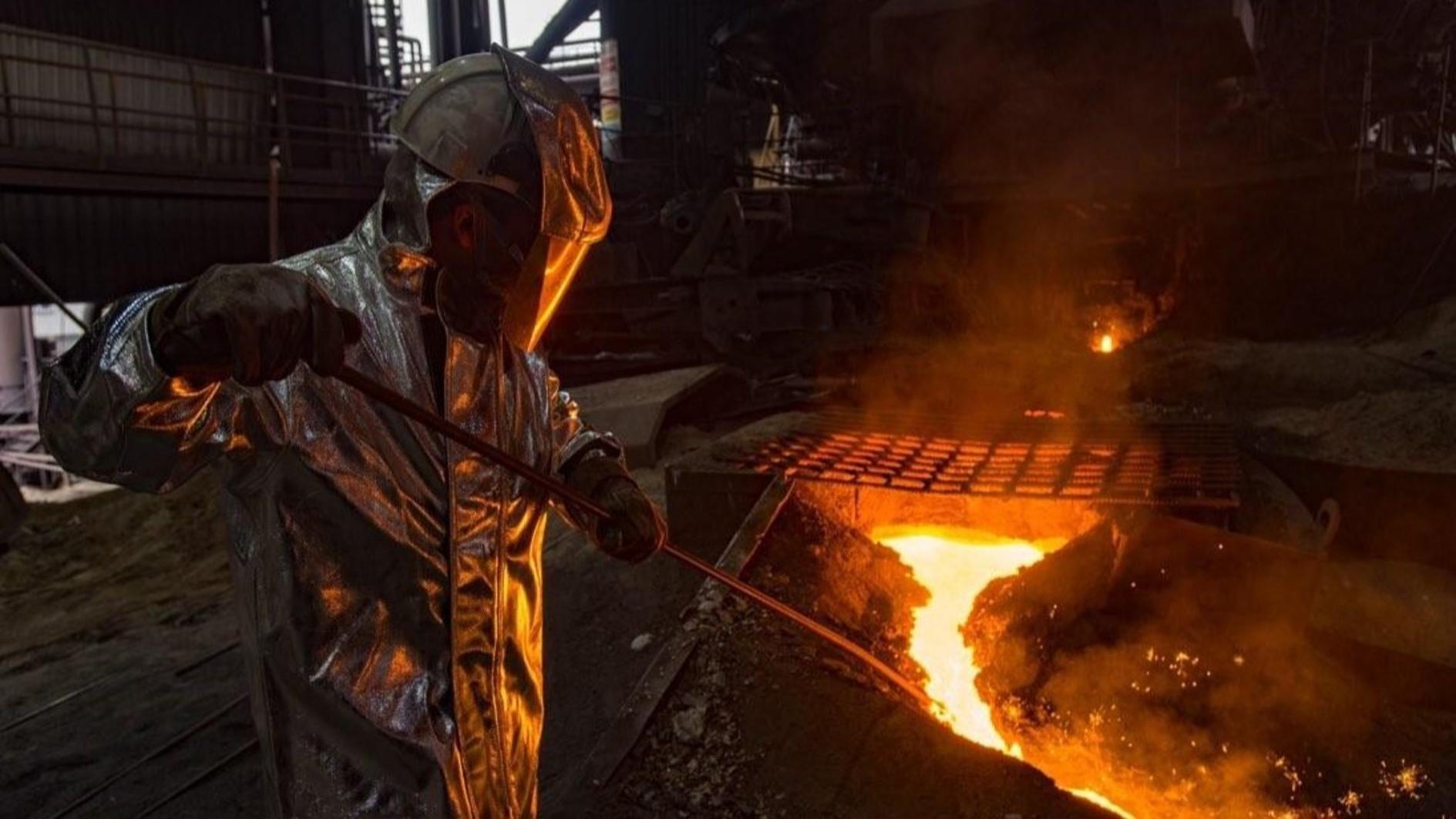Marriage the Kyrgyz way next to Lake Van
WILCO VAN HERPEN

Pamir was greeted and congratulated by the attendees one by one, as they pinned money on his clothing.
On the second day of the wedding of Pamir Vatan in Ulupamir, it was business as usual. Woman were cooking; men were killing another sheep and cutting it into pieces that would satisfy the women. I even saw some men preparing food or tea. Everybody was involved, some way or another, to prepare for the next day’s big wedding.The whole wedding was full of meaningful traditions. I noticed that flour is very important for the people here. Either when killing a sheep or while walking toward the bride’s home, people were doing something with flour. Just before killing a sheep, someone would rub some flour on the head of the sheep. It was during the third day of the festivities that everyone from Pamir’s relatives went to visit the family of the bride. When they arrived at the bride’s house, people were waiting for them with hands filled with flour. Flour symbolizes wealth, and therefore it is used everywhere.
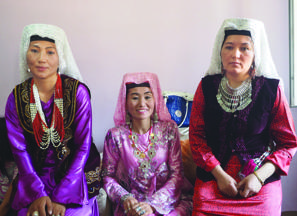 Before going to the bride’s house, many things happened at the same time in Pamir’s house. In the morning when I arrived, some uncles of Pamir were walking around with a piece of a sheep leg wrapped in a piece of cloth. It was as if the men did not know what to do with the bone. One put it under his shirt, and another one stuck it in his sock. But whatever they did, they were not satisfied.
Before going to the bride’s house, many things happened at the same time in Pamir’s house. In the morning when I arrived, some uncles of Pamir were walking around with a piece of a sheep leg wrapped in a piece of cloth. It was as if the men did not know what to do with the bone. One put it under his shirt, and another one stuck it in his sock. But whatever they did, they were not satisfied. Then one took a piece of the carpet, and hid it inside the roll. All of them agreed, and off they went. They did not make it to the bride’s house; they were caught before they arrived. This started the negotiations over how many sheep would be given to compensate for this mistake. The family of the bride was not too hard-headed, and so Pamir’s family gave only one sheep.
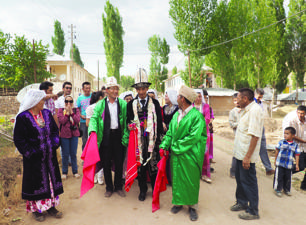 The bag of meat
The bag of meat It was time for the women to do something. First, some men filled a bag with meat. Then one of them took the needle and thread and started to close the bag. In front of him were two silver rings. After he closed one third of the bag, he took one of the rings and sewed it firmly into the bag. After a couple of special knots, it was time for the second ring. Once he finished sewing, he looked at it and decided he had done a good job. The men around him also agreed that this was a beautiful piece of work. The bag was handed over to the women, who walked directly to the house of the bride. There in the living room, at least 16 women were waiting for the bag of meat. Before opening it, they began discussing whether everything had been approved so far. A lively debate started, especially about the content of the bag. It felt too light; maybe the other family had forgotten to include a part of the sheep. One woman told everybody to be quiet and took the bag in her hands.
Twisting it around, she examined all the threads and carefully pulled a string. She lay the bag down, turning it over and over. Then, while making jokes and remarks to all the women, she slowly managed to open the bag without breaking the thread. Getting the first ring was a bit difficult, but the second ring simply slipped off the thread. She proudly showed the rings to everyone and then examined the content of the bag. Carefully, she counted the different pieces of sheep meat. After her fourth count, she finally accepted the gift, and everybody started giggling, laughing and talking at the same time. The cacophony ended as quickly as it had started… It was time for prayer, and all the women recited the Quran.
By noon, it was time for Pamir’s family to travel to the bride’s house. Once they approached, the father of the bride ran toward Pamir and his father and threw flour all over Pamir’s father. He was covered head to toe in a layer of white flour. Men ran around with flour in their hands, trying to find new victims for their ritual. I thought only men participated in this surprising ritual, but once I went outside of the garden I noticed women also involved in the flour war. Flour is very precious for the Kyrgyz people. It symbolizes wealth, and therefore they always put a bit of flour on the head of the sheep before they slaughter it. Now, here again in the garden of the bride’s house, men were wishing the family good health by holding this flour war.
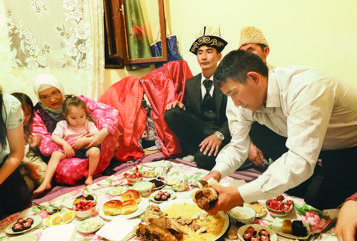 Time to eat
Time to eat Of course, after so much excitement, it was time for tea. Food was also served with the tea. Hundreds of people ate rice, sheep meat, cookies or crispy cubes of fried dough. Rice, sheep meat, big Kyrgyz mantı (a kind of ravioli), sweets, cookies and much more food was served. I wanted to start, because I was starving. But Pamir’s uncle told me I had to wait. First a woman would try the food to consider its taste, but most importantly, she was checking to see whether the food was poisoned.
Tray after tray was brought in. All this food for just 16 men? I was in shock. A couple of men took their pocket knives and starting to cut very fat sheep meat into small pieces. This was eaten with rice, but not just any. The rice had been brought from Afghanistan because it was the best rice anyone could buy, they said. The fatty part of the sheep was especially delicious, and while chatting the trays became emptier and emptier. It was 20 minutes later when I realized that almost all the trays were empty. Pamir did not utter one word during the whole meal; it was forbidden for him to talk while receiving the guests. The whole day, he only ate and smiled.
Finally Pamir began his final preparations before seeing his future wife. Many people had gathered at the schoolyard. Pamir stood in the middle, surrounded by men who all had their arms covered with fabric. Pamir’s father undressed and dressed Pamir at the same time. Layer by layer, Pamir’s traditional wedding costume was slowly completed. Last but not least, the men placed a beautiful Kyrgyz hat on his head. Pamir’s metamorphosis was finally complete. Standing in the hot burning sun, Pamir was greeted and congratulated by the crowd one by one, as they pinned money on his clothing. It was quite spectacular to see this money hanging from his traditional clothing. After everyone had given their gifts to Pamir, they walked off in the direction of the bride.




